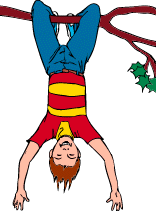ADHD
Attention Deficit/Hyperactivity Disorder
There are 3 types of ADHD
- Combined Type = Symptoms of both A(1) and A(2) are present
- Predominantly Inattentive Type = Symptoms of A(1) are met but not A(2)
- Predominantly Hyperactive-Implusive Type = Symptoms of A(2) are met but not A(1)
In all cases the symptoms (criteria) have to have been present for at least 6 months.
- Either (1) or (2)
- Inattention: Six or more of the following criteria that have interfered with normal activity.
- Often makes careless mistakes in class work, or other activities; often does not pay attention to details.
- Often has trouble maintaining attention in tasks or in play activities.
- Often does not seem to listen when spoken to directly.
- Often does not follow through or fails to finish assignments, chores, or other tasks.
- Often has difficulty organizing in tasks and activities.
- Often avoids tasks that require multiple steps to complete.
- Often loses things that are necessary (toys, homework, tools, ect.).
- Often is easly distracted by extraneous stimuli.
- Often is forgetful in daily activities.
- Hyperactivity and Implusiveness: Six or more of the following criteria that has interfered with normal activity.
- Often squirms in seat, fidgets with hands and feet.
- Often leaves seat when staying seated is expected, such as in school.
- Often runs and climbs when inappropriate.
- Often has trouble playing quietly.
- Often seems to be "on the go" or driven by a motor.
- Often talks nonstop.
- Often talks out of turn, blurts out answer before question is completed.
- Often has trouble awaiting turn.
- Often interrupts, intrudes; butts into conversations, or games others are playing.
- These symptoms were present before the age of 7.
- These symptoms are be seen in more than one setting (school, home, the library, ect.)
- There must be evidence that these behaviors are signficantly disrupting normal activities.
- These symptoms don't occur within any other disorder, such as Schizophrenia, Mood or Anxiety Disorders, ect.
